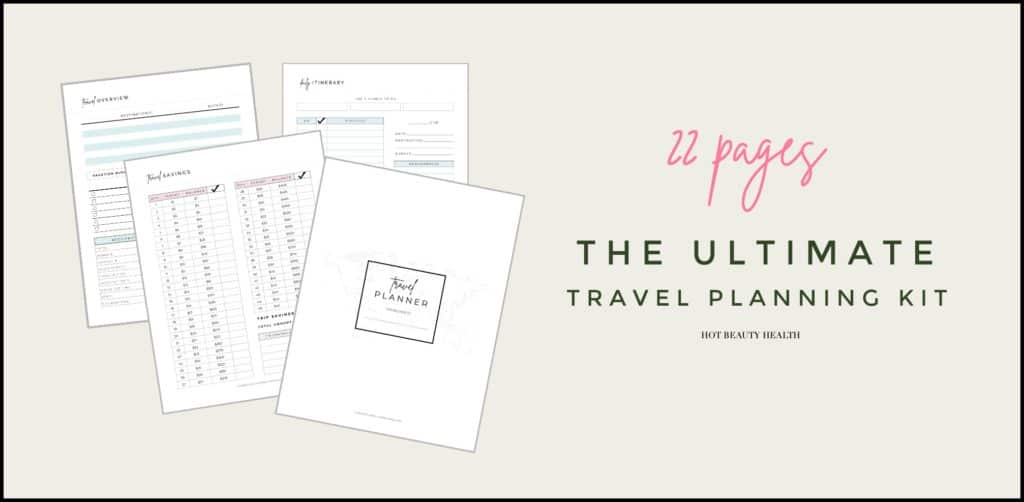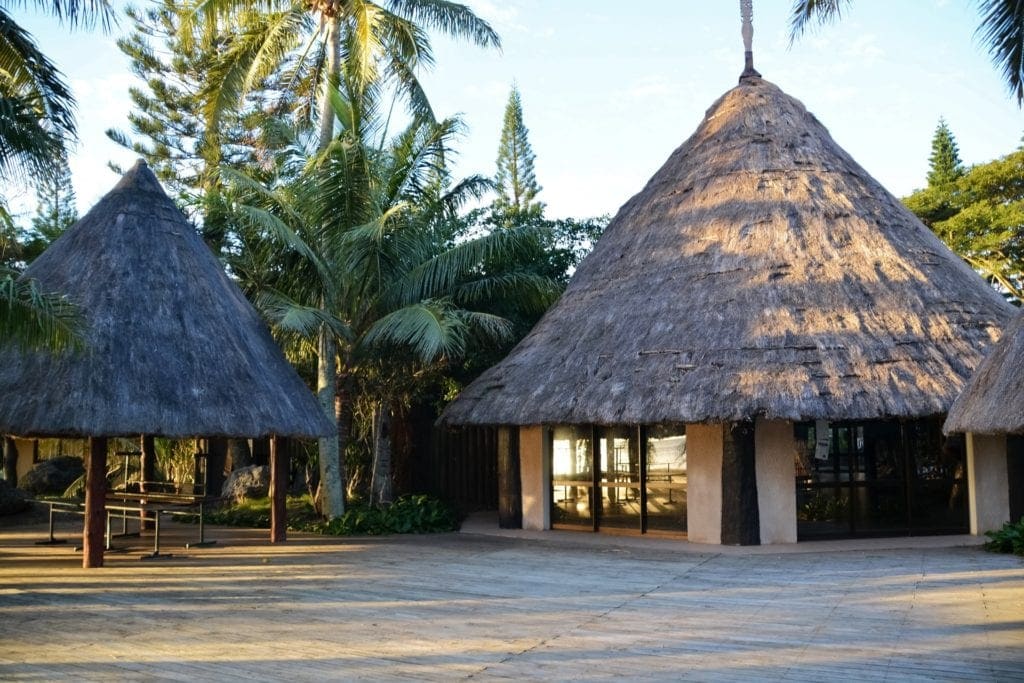How To Plan A Trip For Beginners: A Step-By-Step Guide
Travel magazines and TV shows would have you think that planning the perfect overseas holiday trip is a walk in the park. In reality, though, most people find themselves overwhelmed trying to weave flights and hotel bookings, visa applications and currency swaps into a sensible plan. With so many things to take care of, your vacation starts to look more like a dirty kitchen than an opportunity to relax.
So how about a detailed guide to take the stress off your plate? Read on to find out how to plan a trip successfully from end to end, and consequently turn your dream holiday into reality.
1. Choose Your Destination
Erm, shouldn’t this be simplest part?
You have a whole world of options, pretty much, and you could literally spin the globe if you need help narrowing them down. Or perhaps you’ve already decided where exactly you’ll be going — it’s the one reason why you’re planning this trip, isn’t it?
Well, such decisions aren’t always as straightforward. For starters, few — if any — places on your bucket list will be travel-friendly at any given time of the year. You don’t want your dream holiday turning into a fiasco just because you didn’t take into account the location’s current weather. Do your homework and find out if the conditions will be conducive for your stay, or whether you might be better off vacationing elsewhere.
Also figure out what kind of experience you’re aiming for. Do you want an adventurous, thrill-packed getaway, or a more conservative, laid-back retreat? Once again, a little research will be necessary to help you pick the most suitable place for your aspirations.
Visa requirements are yet another factor to keep in mind when choosing where you’ll be going. Some countries have lengthy application processes, and it may not be possible to obtain a visa on short notice. If it seems like you’ll waste too many precious vacation days waiting for the green light, feel free to tour someplace else — being flexible is key when you’re making holiday plans.
An open mind would also come in handy if you haven’t yet decided where you want to go. Again, your preferences will play a huge part in determining your destination — keep them in mind as you scout various possibilities. Check out travel magazines, along with travel blogs and social media channels, if you need some inspiration. At the very least, browsing through these channels will give you a bunch of options to work off. If you’re lucky, though, you might happen upon an interesting place you previously hadn’t considered. I also suggest checking out Lonely Planet’s travel guides or my fave: Lonely Planet’s The Travel Book!
2. Decide How Long You’ll Be Staying
Is it gonna be a month, a couple of weeks, or just the weekend? The length of your trip will be a huge factor in everything you do from this point onward. Ergo, the earlier you figure it out, the easier your planning will be.
On that note, let’s look at some of the variables that will factor in your decision:
- Available vacation time: It’s not just the number of days/weeks you have off work — also consider other commitments you might have at home (ongoing projects, deadlines for utility bills, etc). The length of your getaway will ultimately depend on how soon these responsibilities will come calling.
- Budget: Time is money. Whatever amount of time you’ll spend away from home will need to be budgeted for in monetary terms — we’ll be discussing that in detail shortly. In the meantime, though, it’s fair to say that your trip will only be as long as your wallet allows.
- Exploration: How long do you think you’ll need to fully explore and enjoy the destination? This will depend on how many places you plan to visit, and how long you’ll be spending at each one. Keep in mind that certain attractions might turn out more interesting than you’d imagined of them; it would help to factor in some contingency time in that regard. Or else be prepared to drop other places from your list — it’s seldom possible to see everything a holiday destination has to offer.
- Travel times: Think about how long it’ll take to journey to and from the destination(s) on your agenda. There are websites that provide reliable estimates of flight times to various places around the world. Be mindful of lengthy airport procedures, as well as layovers if your trip will require connecting flights. Oh, and not to forget the time it’ll take to acclimate to alien time zones.
Mulling over these aspects for a while should help you allocate a concrete timeframe for your travels. The goal is to plan as much time as you need to enjoy the destination, but without lingering too long. Like with everything, quality trumps quantity as far as memorable experiences are concerned.
3. Figure Out Your Travel Budget
It’ll be difficult to have fun if you’ll be constantly worrying about your finances throughout the length of your trip. On the other hand, you don’t want uncontrolled spending opening up the floodgates of regret when you come back home. Or worse, to find yourself stranded without cash in goodness-knows-where. All that can be avoided with a detailed, carefully-planned budget.
Now, there are those who believe in making travel plans around a firm budget (i.e. budgeting as the very first step). This might make sense if you’re aiming for the cheapest possible getaway — for whatever reason. However, building your budget around a destination and timeframe will allow you set a more realistic budget, and get the most bang for your buck too.
And now that you’ve already decided on location and duration, you’re in the right position to crunch the numbers for the following:
- Transportation: This will include what you’ll spend getting to and from the destination, and moving around once you get there. Find out how much each aspect of your trip will cost and sum up all the rates. There’s no harm hunting down deals while you’re at it, but make sure whatever figure you eventually arrive at is credible.
- Accommodation: From hostels to five-star hotels, lodging options — and their respective rates — will vary depending on the destination. Still, your spending here will largely be dictated by the type of experience you want (or what you might be comfortable with, rather). If, for instance, you’re OK with a no-frills stay, you can base your accommodation budget on the average price of local budget hotels.
- Program: Think of all the attractions you want to tour and activities you’re looking to take partake in — each one will cost different from the next. Sum up all these figures to see how much you’ll spend over the course of your trip.
- Purchases: What’s an exotic trip without some souvenirs? Throw in a couple of gifts for friends/family, and you have an excursion that everyone will want to hear about. It’s not possible to determine how much these keepsakes will cost beforehand, but you’ll nonetheless want to consider them in your budget.
- Contingencies: It’s also a good idea to budget for emergencies and unforeseen circumstances, as much as you’re looking forward to a successful trip. Set aside 2-3 days’ worth of expenses (per person) as a rule of thumb.
Do note that a travel budget is meant to serve more as a guide, rather than a rigid ruleset. Your projected expenditure will be based on estimates and incomplete information to a significant extent. Chances are that you’ll need to revise and re-assess your priorities at some point, so it helps to be flexible. This step may seem overwhelming or scary but it doesn’t have to be. In fact, I’ve went ahead and written a post so you can create a realistic travel budget and stick with it!
4. Research Flights and Dates
Creating a workable travel schedule requires that you determine your arrival and departure dates first. Because flight ticket availability and pricing tend to vary wildly over time, you want to start off your research early. Use online flight comparison tools to find out what flights you can use to get to your destination, their prices, as well as departure/arrival times.
Be particularly conscious of arrival times — you want your first moments upon touchdown to be as facile as possible. Try to imagine how you’ll find your way around a foreign city at a particular time of day. Can you do so without assistance in the middle of the night? Do you even speak the local tongue in the first place?
Once you consider such factors, it becomes clear that the cheapest tickets (red-eyes, specifically) might not be your best bet. There’s no sense flying on the lowest fare only to cough up a premium for the cab ride to your hotel or, worse, lose your luggage. So instead of narrowing down options by price alone, prioritize your comfort and convenience.
Look out for flights that will depart and arrive at reasonable times around the date your trip is set to begin, but don’t make any reservations just yet. Not before you’ve worked out your travel itinerary.
Further Reading: How To Book The Cheapest Flight Possible
5. Create Your Itinerary
You’ve done all the hard work (well, at least most of it) and made some difficult decision, so now the fun can begin! Planning for all the interesting things you’re going to, as well as places to see, will turn your trip from a laundry list into something to look forward to — as counter-intuitive as it sounds.
More significantly, an itinerary will help you go through each day smoothly, and facilitate a seamless transition between days/locations. As a result, you’re able to make the most of your precious holiday time.
To build your schedule, start by listing the cities you will be touring in each country, along with their respective sights/activities. As highlighted earlier, it helps to pick things that will excite or fascinate you the most. And as a rule of thumb, you’ll need two to four days to explore each city/location. There’s no harm allocating more time to places you like, but you’ll want to avoid single-day stays. Even if it’s in a small town, the hassle of packing, unpacking, and traveling in between just isn’t worth it.
At this point, you should be able to mesh these locations into a sensible schedule. Use a map to figure out where you’ll go first, second, and so on, keeping transit times between places in consideration. Once again, feel free to drop any city that’s not worth fitting into your itinerary, given your limited holiday time.
The next step is to map each day with things to do in the morning, afternoon, evening, and night wherever applicable. Again, it helps to group attractions and activities by proximity. This level of focus will allow you to fine-tune your budget by accounting for food, fares, entry fees, and spending money. You’ll also want to find out if there are any holidays that could throw a wrench in your plans and, by extension, interesting events you could slot into your itinerary.
Consider leaving out a free day for such impromptu attractions. You never know what interesting sight or activity you’ll find on location. I sometimes find impromptu activities when I’m looking through Airbnb Experiences or if I’m posting my adventures on Instagram and a commenter offers a suggested place to see, eat, shop or explore. Otherwise, this unscheduled time will come in handy in case you need to change plan. And it’s at this point that we must reiterate the need for agility in your planning. Your itinerary, much like your budget, is by no means a binding contract.
Further Reading: How To Create The Perfect Travel Itinerary
6. Book Everything
Crafting an itinerary is only half the battle; you need to lock everything in place by making all the relevant reservations:
- Flights: This should be done first. Booking tickets for the flights you chose earlier is best done directly via the airline’s website. This way, you will receive timely updates on cancellations and delays should they crop up.
- Accommodation: I often times book my accommodation at an Airbnb as I find you can get more value for your buck compared to a hotel. For hotel reservations, you’re better off going through a third-party vendor like Booking.com or Trip Advisor, as this is where the best deals are often found. If I have a tight budget, HostelWorld is my go-to place to find private rooms in hostels. Staying at a hostel is great for those who are traveling solo as it’s a great way to meet other likeminded travelers.
- Transportation: Check if it’s possible to book train tickets for your local travels in advance. Car rental reservations should also be made at the earliest possible opportunity.
- Places and Activities: From museums and historic sites to concerts, you will need to secure reservations for all the places and activities in your itinerary.
7. Tie Up Loose Ends
Eagerly looking forward to your departure date, aren’t you? Well, you’re not ready to take off just yet. There are still a few things you need to take care of before you can even start packing:
- Visas: You may or may not need entry visas for the destination(s) in your itinerary — it always helps to double-check. Find out if it’s possible to secure them on arrival; some countries might require you to do this before you leave. But first, you’ve got to make sure you have a valid passport. Most jurisdictions will require that your passport remains valid for at least six months after you return.
- Immunization: More than just a legal requirement, immunization is crucial to protecting your wellbeing as you travel across foreign environments. And because each region presents unique health risks, it’s a good idea to check the CDC website (or your country’s equivalent) for country-specific directions. Also see your doctor to see if you’ll need additional safeguards to take care of other health concerns you might have.
- Travel Insurance: It’s a good idea to get travel insurance even if you already have a contingency fund. The one I personally use when I travel anywhere is World Nomads. It’s super easy to sign up (only just a few minutes). This way, you’re assured of receiving the best treatment abroad in case of a sudden illness or emergency, without having to worry about the added cost. Your insurer will foot the bill, but only if you obtain coverage before you leave.
- Smart Traveler Enrollment Program: The STEP, as most people know it, is a service designed for Americans travelling overseas. Enrolling in the STEP program will allow you to receive updates on events that might affect your travels (hostile weather, civil unrest etc.). Otherwise, check your country’s travel department for similar initiatives.
- Inform Your Bank/Card Provider: It’s very important that you inform your bank and/or card provider of your upcoming trip. Be sure to declare each location you plan to visit, and how long you’ll be away. This way, your card/bank account will not be frozen due to a sudden influx of suspicious charges.
- Have a Plan For Currency: Look for the best exchange rates for buying local currency. My favorite place to get local currency is at the ATM. I usually get a better rate at ATMSs then at currency exchange kiosks at the airport even with the ATM fee. You should however check and see if your bank charges additional fees when you use your debit card overseas. Another option is to exchange money before leaving at your local bank first.
- Get Backup Credit Cards: Continuing on the above point, getting a second debit/credit card to serve as a backup would be a good idea. This ensures you’ll be able to access your funds in the event that your main card gets stolen or frozen.
- Back up Your Documents: Scan all the critical documents you’ll be carrying along and email the copies to yourself. Specifically, you want to have scanned copies of your passport, travel insurance papers, receipts of valuable items, and credit cards (yes, you can’t have enough backups for those!). These will save you a great deal of anguish should you lose your luggage, or anything else happens.
- Research Internet/Data Access: Do some research beforehand to know how to get internet access on your phone and/or laptop while you’re abroad. Depending on where you are going, you may or may not need a prepaid local SIM card once you arrive.
- Download Helpful Apps: Some of my favorite apps that has helped me during my travels are Google Maps, iTranslate, Google Translate, Lounge Buddy and Time Buddy. Choose apps that will help you travel better.
Further Reading: 5 Reasons Why You Shouldn’t Skip Travel Insurance
8. Get Packing…
Much can be said about booking hotels and flight seats, but nothing better puts you in travel mode like a packed suitcase! On the other hand, packing often proves the most frustrating phase of holiday planning. Determining what to bring/leave out is difficult enough without stringent airline weight restrictions.
So trust us when we say the lesser, the better. Especially when it comes to clothes and shoes — you might actually be fine with half the amount you think you’ll need. Let’s help you put that into action:
- Only pack essential outfits: Essential means the stuff you tend to wear on the average day; which is about 30% of your wardrobe if statistics are anything to go by. The rest are “just-in-case” items that shouldn’t eat up too much of your suitcase space. In other words, don’t try to pack clothes for every possible situation.
- Pack for the weather: You know you’re doing it right when most of your core wardrobe is appropriate for the prevailing weather in your destination. Otherwise, look for a few more “maybes” to thin out — or else revise your wardrobe choices altogether.
- Pack in layers, not bulk: Dressing in layers is the best way to insulate yourself from the cold if you’re traveling to or across frigid climates, so pack accordingly. Multiple thin outfits will take up less volume and offer more flexibility than, say, a bunch of sweaters and coats. Any such bulky items you need are best worn to conserve packing space.
- Choose conformal colors: Keep your travel wardrobe cohesive by sticking to a simple color palette, or at least choosing pieces you’ll be able to mix and match with ease. The goal here is to maximize the number of outfits you can create with the clothes you’re bringing.
For the other stuff you’ll need to carry besides clothing, it’d help to create a packing list. Again, try to keep the ‘dead weight’ minimal. Prioritize essential items and leave out anything you could purchase once you arrive.
And now that you’ve figured out what you’ll be bringing for your trip, you can get started with the actual packing:
- Choose the right size of suitcase: Ideally, you want a suitcase that provides just the right amount of space to hold your bring-along items. An oversized bag will only invite the temptation to over-pack. Also make sure your suitcase has all key features like wheels in a functional state.
- Use packing cubes and compression bags: Pack your clothes in compression bags to free up room for other things. Packing cubes will come in handy for those oddly-shaped items you plan to bring.
- Secure and tag: Choose TSA-approved locks that will keep your stuff safe while still providing access for customs officials. Also make your suitcase easy to identify by sticking a prominent name tag, plus a ribbon around the handle.
Be sure to pack well ahead of your departure date. The earlier you get it done, the less stressful it is, and the lower the chances of forgetting something crucial.
…And Enjoy Your Time Away
Well, get going already! All the hard work is done, so now the fun can begin — and this time we really mean it. Strap your seatbelt and get ready to relax, soak up all the beautiful scenes, and turn every moment of your holiday trip into a memorable experience. Have a blast!
The Ultimate Travel Planner Kit

Do you struggle with organizing a trip?… Or maybe you have trouble sticking with a vacation budget? I can help you in making sure that every single moment of your vacation is perfectly organized and memorable when you use my Travel Planner. This 23-page ultimate travel planning kit are the exact printables I use to plan and organize my own travel trips.
Use it to help you save money and get organized before your next adventure so you can focus on what you’re vacationing for: FUN and RELAXATION!







4 Comments